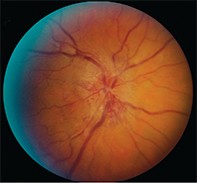Peer Reviewed
Ophthalmology clinic
Swollen optic discs. The need for timely diagnosis
Abstract
The differential diagnosis for swollen optic discs covers a wide range of conditions, from normal variants to ophthalmic and neurological causes. Investigation of the cause is needed in every patient with disc swelling.
Key Points
The optic disc is the anteriorly visible portion of the optic nerve within the eye. Pathological changes seen at the optic disc fall into three broad categories: cupping, pallor and swelling.
Swelling of the optic disc occurs when there is a hold-up of the axoplasmic flow along the optic nerve at the level of the lamina cribrosa for any reason (Figure 1). Therefore, all cases of disc swelling will need some form of investigation to determine the cause. None of the different causes of true optic disc swelling can be diagnosed clinically (Figure 2).
The term papilloedema is reserved for cases where the disc swelling is known to be due to raised intracranial pressure.
Picture credit: © Felix Design/Shutterstock
Purchase the PDF version of this article
Already a subscriber? Login here.

